5 Exercise Modifications You Can Do During Pregnancy
Fitness • May 6, 2016
For a lot of expecting mothers, the impending changes to their bodies can be overwhelming and make them feel almost like they have no control over what will happen. There are plenty of women who are misinformed when it comes to what they can and cannot do while pregnant, causing them to potentially stop their physical activities for the duration of the pregnancy out of fear that they will harm the baby or themselves.
While, yes, some changes have to be made in order to make sure that both mom and baby stay in good health throughout the pregnancy, that doesn’t mean that she has to bring her life to a screeching halt where exercise is concerned. As a matter of fact, exercise is healthy for mom, therefore, healthy for baby as well!
Whether you are just starting to work out now or have been a gym rat for years, you can do these modified exercises without harming yourself or your child. Trainers Dennys and Simon demonstrate 5 common exercises and modifications they suggest for expecting mothers. Not only will these exercises give mom a safe way to stay in shape over the course of her pregnancy, but they will also help her body prepare for labor and aid in recovery.
As always, speak to your doctor about your specific pregnancy and if there are any precautions that you should take. If your doctor says that you are cleared to do these exercises, remember that it is still crucial that you listen to your body and don’t push yourself beyond your capabilities.
While pregnant, your center of gravity will be changing on a constant basis. For that reason, our main focus is to avoid exercises that will require you to balance more than usual. It’s also important to avoid exercises that increase your risk of falling or force you to exert excessive amounts of energy.
Trainers Dennys and Simon demonstrate 5 common exercises and the modifications they suggest for expecting mothers.
BURPEES: During your first trimester and before you begin showing, you can still do full burpees (lowering your body all the way to the floor).
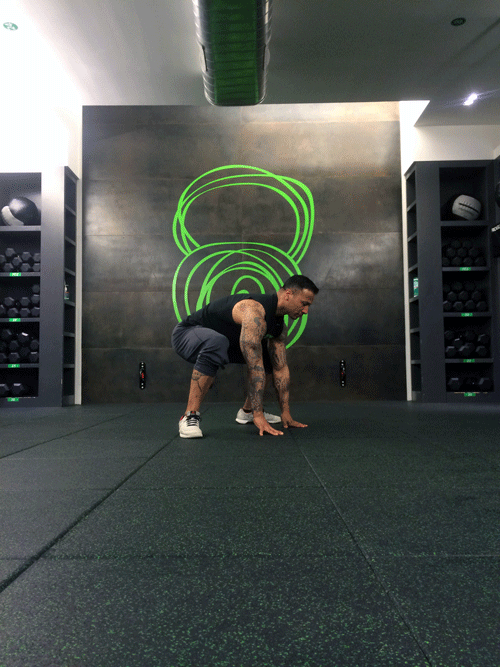
MODIFICATION: Step Back Squat Thrusts – Similar to a burpee, you will step or jump your legs back to a push-up position. Instead of lowering your body to the floor as you would in a full burpee, you step or jump to the bottom of a squat. Dennys and Simon recommend starting to do this modification once you begin showing or when you enter your second trimester. This is also very dependent on the mother and how comfortable they feel doing these exercises.
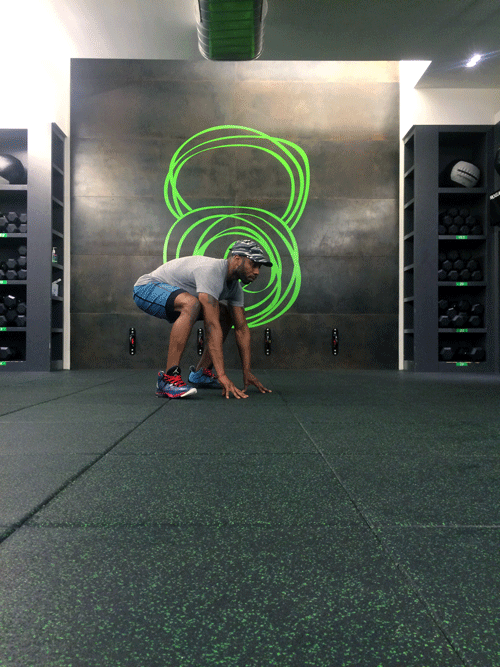
CHEST PRESS: After your first trimester, research recommends stopping exercises that require you to lay on your back as blood circulation may be affected by the added weight of the baby and can make an expectant mother dizzy or nauseous.
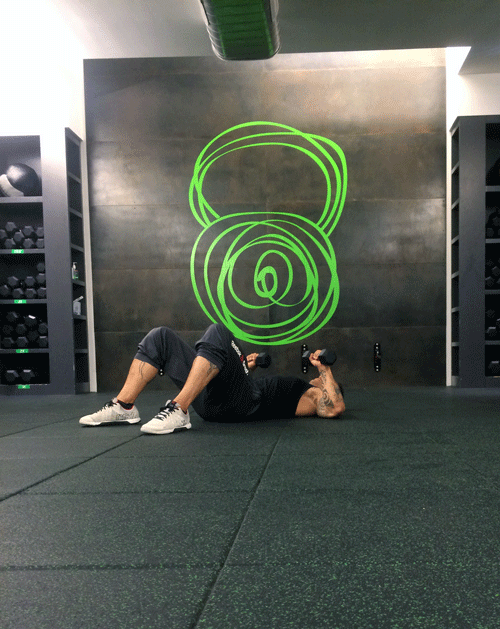
MODIFICATION: Reclined Chest Press- It is important to find alternatives to exercises so that you do not neglect specific muscle groups while you are pregnant. You can get the same stimulus by doing chest presses in a chair or on a reclined bench.
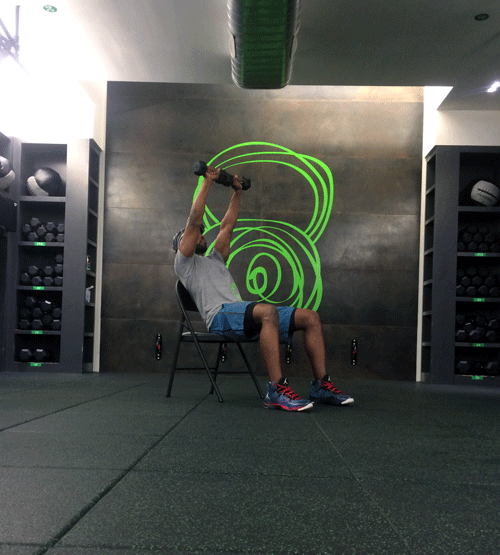
RUSSIAN TWISTS: Abdominal exercises that require lying on your back are discouraged, but that doesn’t mean all abdominal exercises should be skipped! The Russian Twist is not recommended after the first trimester.
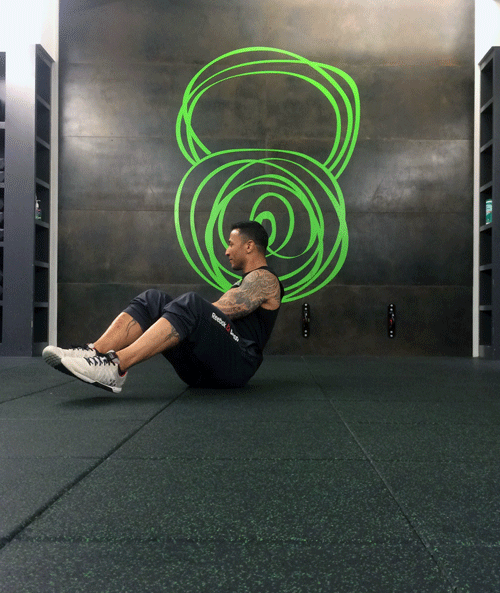
MODIFICATION: Seated Torso Twists- A great alternative to the Russian Twist, the Seated Torso Twist, allows the mom-to-be to work her core. Having a strong core helps your body cope with postural changes throughout the pregnancy and eases lower back pain.
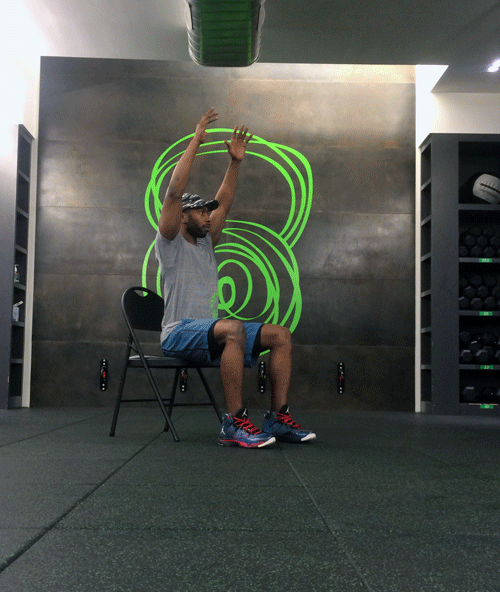
PLANK SHOULDER TAPS: Nearly two-thirds of all new moms experience diastasis or ab separation. Planks are a safe option for abdominal strength during the majority of your pregnancy, and unlike crunches and sit-ups, they don’t worsen diastasis.
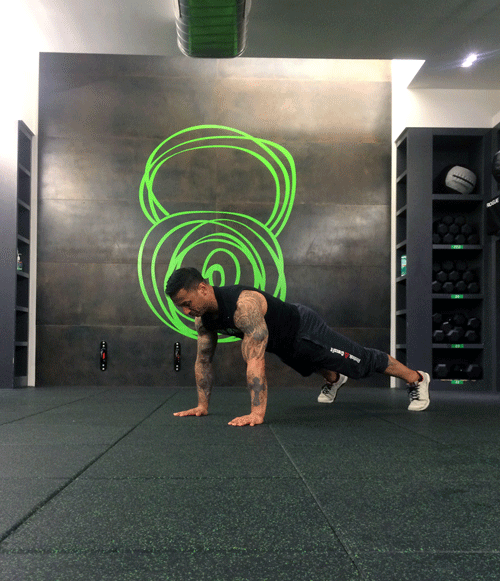
MODIFICATION: Wall Plank Shoulder Taps- By the third trimester, the weight of the baby may make it uncomfortable to hold a true plank. This modification ensures less pressure on the back while keeping the core and shoulders still engaged.
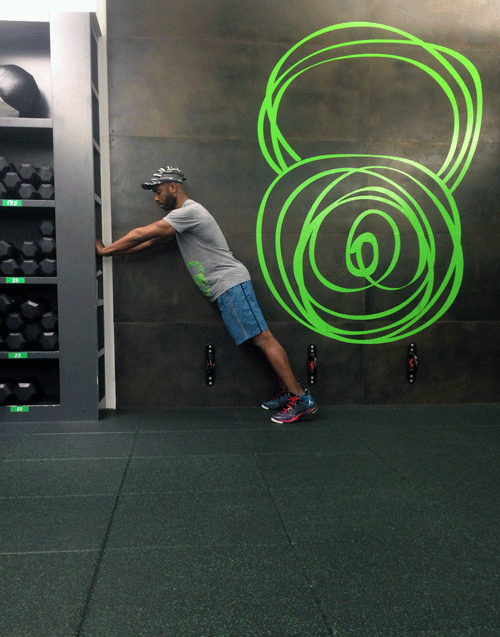
SQUATS:
Squats encourage a strong pelvic floor. This is especially important for expecting mothers. The pelvic floor is underneath all of the organs and the weight of the baby. A strong pelvic floor will help during labor and aid in a speedy recovery.
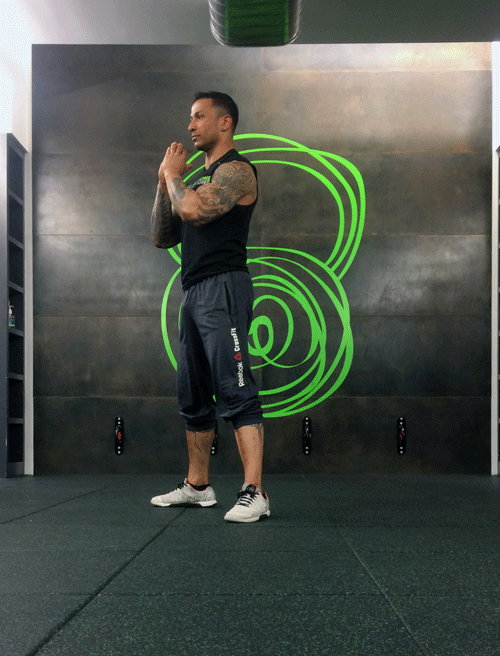
MODIFICATION:
Sumo Squat- Regular squats are great in the early weeks of pregnancy, but once the belly starts growing, the wide-angle of a sumo squat makes more room for a comfy baby. A Sumo Squat still works the glutes, quadriceps, hamstrings, hip flexors, and calves similar to a traditional squat.
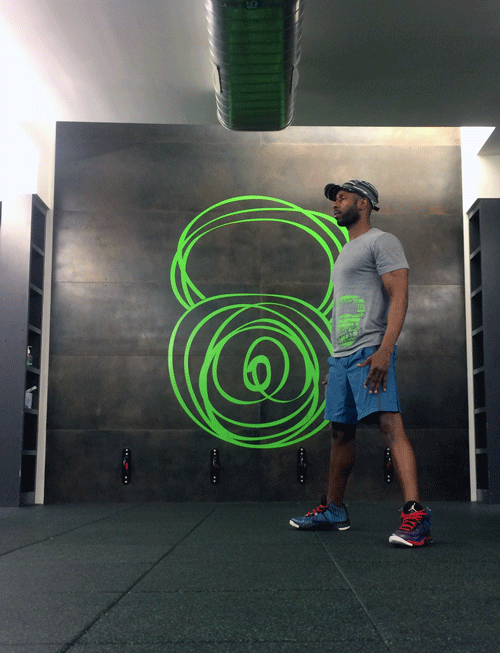
Before trying any of these moves at home, we recommend consulting your doctor, and if you are taking a Fhitting Room class for the first time, make sure to introduce yourself to your instructor and let them know you are expecting and what week you’re in. If you can’t make it to the studio, Dennys and Simon put together a workout you can try at home!
Perform the exercises in the order listed for 40 seconds with 20 seconds of rest between each movement. Repeat 3 times for a total of 4 rounds.
– Sumo Squats
– Wall Shoulder Taps
– Seated Reach and Twist
– Reclined Chest Press
– Step Back Squat Thrusts
Looking for more modifications for common HIIT movements? Dennys shared some with What To Expect. Read it here.
Shoutout to our FHITmoms; Michelle who continued to get her FHIX throughout her second pregnancy, and Alanna who started to come to The Fhitting Room just days before she found out she was pregnant with her first child.
These stories are proof that, if done right, there are safe exercises for expecting mothers that will not harm their health or their baby. Over the years, as technology progresses, we learn more about the human body and its limitations. There are plenty of areas of medicine that we have learned that the body can handle more than we initially thought, pregnancy being one of them. There are safe ways to keep active and stay in shape while pregnant.